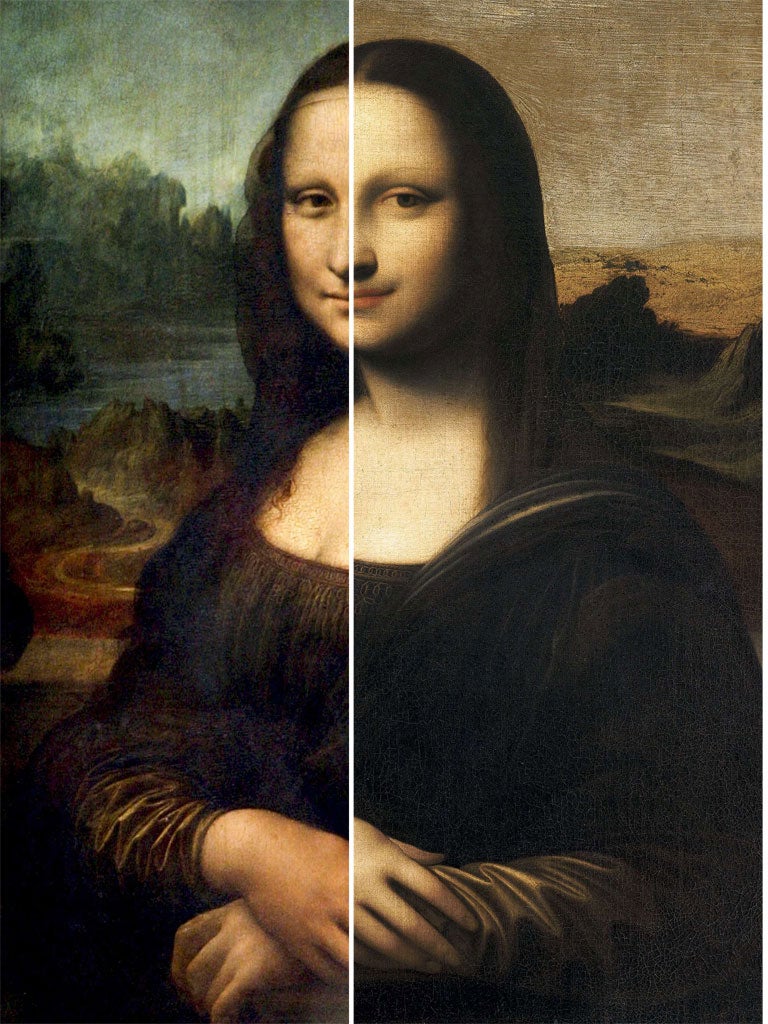Isleworth Mona Lisa 'younger' than the Louvre's treasured Leonardo da Vinci

Your support helps us to tell the story
From reproductive rights to climate change to Big Tech, The Independent is on the ground when the story is developing. Whether it's investigating the financials of Elon Musk's pro-Trump PAC or producing our latest documentary, 'The A Word', which shines a light on the American women fighting for reproductive rights, we know how important it is to parse out the facts from the messaging.
At such a critical moment in US history, we need reporters on the ground. Your donation allows us to keep sending journalists to speak to both sides of the story.
The Independent is trusted by Americans across the entire political spectrum. And unlike many other quality news outlets, we choose not to lock Americans out of our reporting and analysis with paywalls. We believe quality journalism should be available to everyone, paid for by those who can afford it.
Your support makes all the difference.New tests on a painting billed as the original version of the Mona Lisa, Leonardo da Vinci's 15th century portrait, have produced fresh proof that it is the work of the Italian master, a Swiss-based art foundation claims.
The tests, one by a specialist in "sacred geometry" and the other by the Swiss Federal Institute of Technology in Zurich, were carried out in the wake of the Geneva unveiling of the painting, the Isleworth Mona Lisa, last September.
"When we add these new findings to the wealth of scientific and physical studies we already had, I believe anyone will find the evidence of a Leonardo attribution overwhelming," said David Feldman vice-president of the foundation said.
The Mona Lisa in the Paris Louvre for over three centuries has long been regarded as the only one painted by Leonardo - although there have been copies - and claims for the Swiss-held one were dismissed by some experts last year.
But it also won support in the art world, encouraging the Zurich-based Mona Lisa Foundation - an international group which says it has no financial interest in the work - to pursue efforts to demonstrate its authenticity.
Feldman, an Irish-born international art and stamp dealer, said he was contacted after the public unveiling of the portrait - which shows a much younger woman than in the Louvre - by Italian geometrist Alfonso Rubino.
"He has made extended studies of the geometry of Leonardo's Vitruvian Man" - a sketch of a youth with arms and legs extended - "and offered to look at our painting to see if it conformed," Feldman told Reuters.
The conclusion by the Padua-based Rubino was that the Isleworth portrait - named for a London suburb where it was kept by British art connoisseur Hugh Blaker 80-90 years ago - matched Leonardo's geometry and must be his.
The Zurich institute, the Foundation said, carried out a carbon-dating test on the canvas of its painting and found that it was almost certainly manufactured between 1410 and 1455 - refuting claims that it was a late 16th century copy.
Earlier brush-stroke studies presented last September by US physicist and art lover John Asmus concluded that both the "original" version and the Louvre crowd-puller were painted by the same artist.
The authenticity of the foundation's painting, discovered by Blaker in an English country house in 1913, has been fiercely challenged by British Leonardo authority Martin Kemp, who argued last year that "so much is wrong with it."
Feldman and foundation colleagues retort that Kemp has never followed up on invitations to come to see it.
Documents show that a painting of his wife Lisa was commissioned around the turn of the 16th century by Florentine nobleman Francesco del Giacondo. In French, the Louvre version is known as La Giaconde and La Giaconda in Italian.
Supporters of the "younger" version say it was almost certainly delivered unfinished to del Giacondo before Leonardo left Italy in 1506 and took up residence in France, where he died in 1519 in a small Loire chateau.
From the Giacondo house, it probably eventually found its way to England after being bought by a travelling English aristocrat, this account runs, while the Paris version was probably painted by Leonardo around 1516 in France.
Reuters
Join our commenting forum
Join thought-provoking conversations, follow other Independent readers and see their replies
Comments